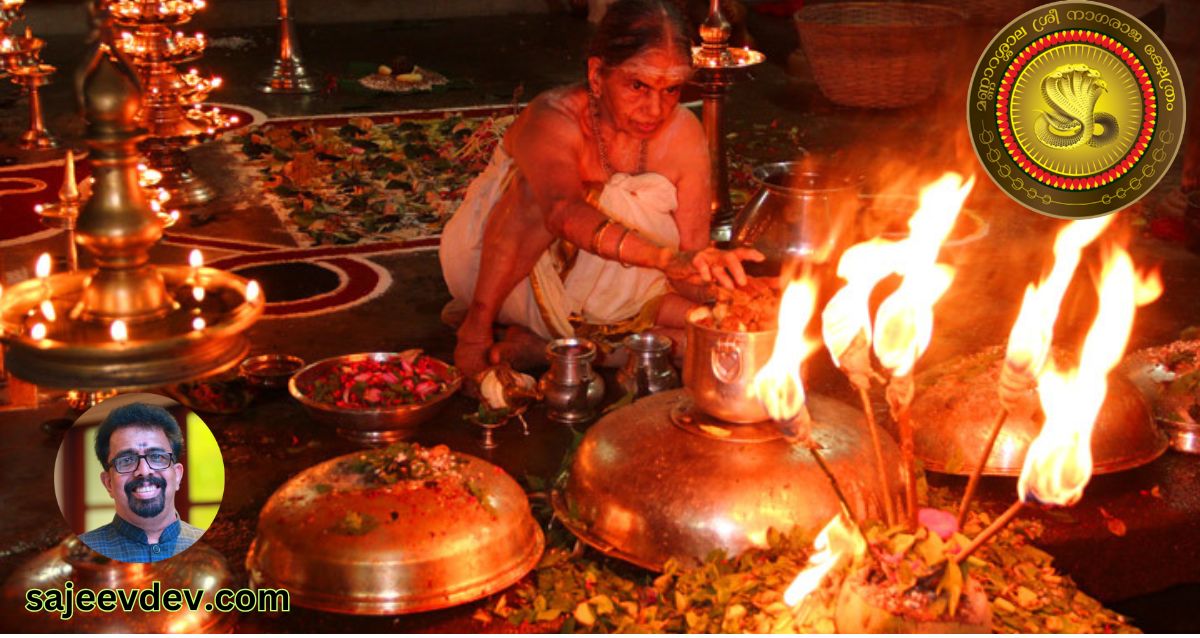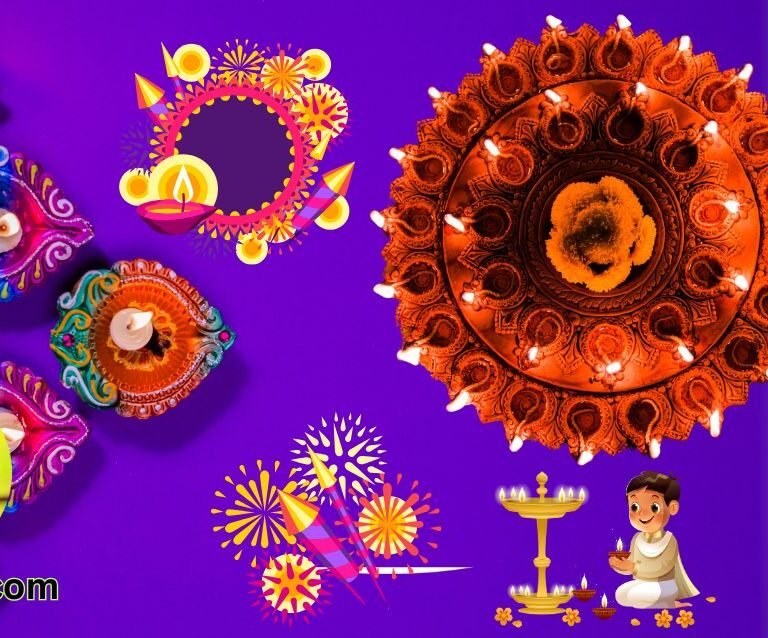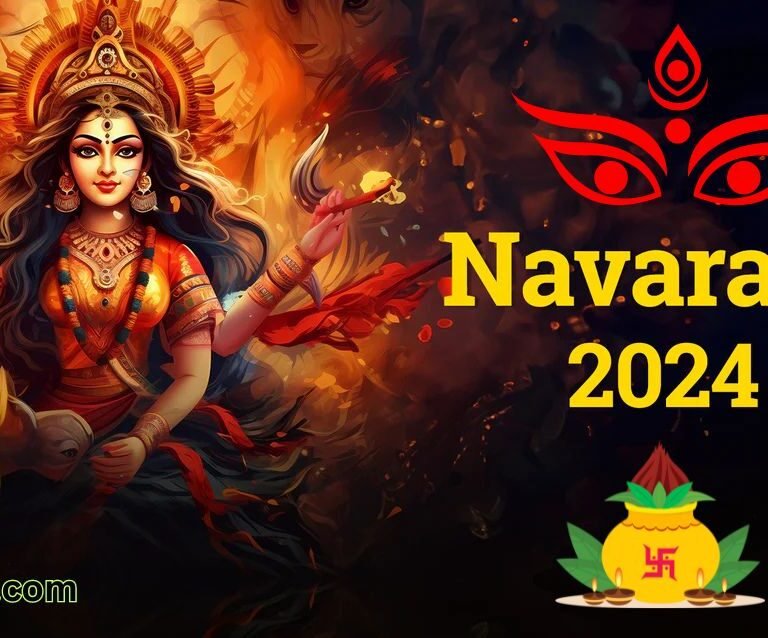Mannarasala Ayilyam Festival
The Mannarasala Ayilyam Festival is a significant event celebrated in Kerala, India, renowned for its distinctive cultural and religious aspects. This festival takes place annually at the Mannarasala Nagaraja temple, which is dedicated to the serpent god Nagaraja. The roots of this festival can be traced back centuries, intertwined with the traditions of the local community. It symbolizes devotion, fertility, and the reverence of serpents, which hold a special place in the beliefs of many devotees.
The festival, observed during the Ayilyam star in the Malayalam month of Kumbham, typically attracts thousands of pilgrims and visitors from various regions. It provides an opportunity for attendees to seek blessings for prosperity, health, and harmony in their lives. Unique rituals performed during the festival include offerings of milk, flowers, and traditional dishes to Nagaraja, underscoring the connection between the deities and their devotees. This spiritual relationship is a central theme for individuals attending the festival, reinforcing their commitment to their beliefs and traditions.
Historical Background of Mannarasala Temple
The Mannarasala Sree Nagaraja Temple, situated in Alappuzha, Kerala, holds significant historical and cultural value. Established centuries ago, this temple is dedicated to Nagaraja, the serpent deity, and is renowned for its unique rituals and festivals. Historical records indicate that the temple was built during the 5th century CE, though local legends suggest its origins may be even older, with roots in the ancient mythologies of the region.
One of the most captivating legends surrounding the temple speaks of a local queen who, unable to conceive, was guided by sages to perform penance at the temple. Upon doing so, she was blessed with children, believed to be favored by the serpent deity. This pivotal event not only solidified the temple’s reputation as a sacred site for fertility rites but also encouraged a continuous flow of devotees seeking blessings, thus intertwining the temple’s existence with the lives of countless families over generations.
Throughout the centuries, Mannarasala Temple has undergone several transformations, adapting to the changing socio-cultural landscape of Kerala. During the medieval period, the temple saw increased patronage from the local chieftains who considered the deity essential for their prosperity and victory in wars. As a result, grand renovations took place, enhancing the temple’s architecture and making it a focal point of worship.
In addition to its architectural significance, Mannarasala Temple has evolved as a prominent pilgrimage destination. The temple’s annual celebrations, particularly the Mannarasala Ayilyam Festival, draw thousands of pilgrims who come to partake in the rituals and cultural festivities associated with Nagaraja. The festival serves as a bridge between the past and present, sustaining age-old traditions while bringing together the community in reverence to the deity.
Significance of Nagaraja and Other Snake Deities
Nagaraja, a revered serpent deity in Hindu mythology, holds a prominent position among the pantheon of snake deities. He is often depicted as a king of serpents and is believed to possess significant powers related to fertility, prosperity, and protection from evil forces. In various regions of India, Nagaraja is worshipped not only as a symbol of strength but also as a guardian who oversees the well-being of his devotees. His divine attributes make him an important figure in the rich tapestry of Hindu spiritual traditions, where he is associated with safeguarding individuals and families from harm.
In addition to Nagaraja, Hindu mythology encompasses a variety of snake deities, each with its distinct attributes and responsibilities. These include deities such as Vasuki, the serpent king known for his role in the churning of the ocean, and the multi-headed Ananta, who serves as a bed for Lord Vishnu. The reverence for these snake deities stems from the belief in their supernatural abilities to control rain, agricultural fertility, and thereby ensure prosperity. Devotees firmly believe that honoring these serpentine gods can bring good fortune and shield them from adversities.
The Mannarasala Ayilyam Festival serves as a vital platform for devotees to pay homage to Nagaraja and the other snake deities. During this festival, rituals are performed with great fervor, including the offering of milk, flowers, and traditional sweets. Such practices are believed to invoke blessings that grant health, prosperity, and protection from ailments. The significance of honoring these divine entities takes a front seat during the festival, symbolizing the deep-seated cultural belief in the intrinsic connection between humans and the divine forces of nature. This sacred observance not only strengthens individual spirituality but also fosters a sense of community among participants, thereby enhancing the importance of snake deities in contemporary religious practices.
Celebration Rituals and Customs
The Mannarasala Ayilyam Festival is characterized by a profound display of rituals and customs that highlight its cultural and religious significance. Held annually at the Mannarasala Sree Nagaraja Temple in Kerala, this festival is an homage to Nagaraja, the serpent king, and is marked by specific traditional practices aimed at invoking blessings and prosperity.
One of the central rituals of the festival involves devotees offering a variety of traditional items to the deities, including rice, milk, and flowers. These offerings are not merely acts of devotion but are deeply rooted in the cultural fabric of the community, symbolizing gratitude and reverence towards the divine. Devotees believe that such offerings will lead to blessings, particularly in the realms of health, fertility, and well-being.
A distinctive feature of the festival is the chanting of prayers, which is considered essential for invoking divine attention. Devotees engage in repetitive recitations of prayers dedicated to the serpent king and other deities, creating an atmosphere of spirituality and communal harmony. The rhythmic chanting fosters a deeper connection with the divine, reinforcing the faith of the participants and enhancing the overall sanctity of the festival.
Another prominent aspect of the Mannarasala Ayilyam Festival is the presence of traditional rituals performed by priests, which includes elaborate ceremonies, purification rites, and the ceremonial offering of coconut and various grains. These rituals serve as a medium through which devotees seek blessings from the serpent king and express their hopes for a bountiful life. The entire event is replete with symbolic acts that underscore the significance of seeking and receiving blessings within the spiritual framework of the festival.
In essence, the rituals and customs associated with the Mannarasala Ayilyam Festival embody a rich tapestry of beliefs and practices that contribute to its importance in the spiritual lives of devotees, ensuring its continuity and reverence in the community.
Cultural Aspects of the Festival
The Mannarasala Ayilyam Festival, celebrated in the southern Indian state of Kerala, is a vibrant manifestation of the region’s rich cultural heritage. One of the most salient features of the festival is its unique accompaniment of traditional music and dance. Local art forms such as Kathakali and Mohiniyattam are often performed, drawing crowds from both the local populace and visitors from afar. These performances not only enhance the festival’s celebratory atmosphere but also serve as a means of preserving and transmitting the traditional narratives and folklore associated with the Mannarasala temple.
The rhythm and melodies of regional music resonate deeply within the hearts of attendees, as they recount the tales of deities and local legends. The use of instruments like the chenda and maddalam introduces a percussive vigor that invigorates the audience, fostering a sense of collective participation. This synergy of sound and movement reinforces community bonds, inviting individuals of diverse backgrounds to engage in shared cultural experiences. Such performances highlight the significance of storytelling in Kerala’s tradition and enhance the allure of the Mannarasala Ayilyam Festival.
Role of Devotees in the Festival
The Mannarasala Ayilyam Festival is a renowned event that attracts numerous devotees, each participating in the festivities with reverence and dedication. Their motivations for attending this significant celebration are deeply rooted in spirituality, cultural pride, and community bonding. Many followers visit the festival seeking blessings from Nagaraja, the serpent deity honored during the event, believing that their prayers will yield personal benefits, family harmony, and overall well-being. The act of participating in such rituals allows devotees to express their faith and devotion collectively.
During the festival, devotees engage in various activities that foster a heightened sense of community. These activities often include aligning themselves with traditional practices, such as offering food, flowers, and symbolic items at the temple. This engagement is not merely a form of worship; it embodies a personal quest for connection with the divine. Many devotees recount personal experiences of transformation and hope that arise during the rituals, sharing stories of fulfillment and answered prayers. Such narratives often motivate others to join in, thus expanding the circle of faith and devotion.
The collective participation of devotees creates a vibrant atmosphere, transforming the festival into a unifying event for individuals from diverse backgrounds. This sense of belonging is essential, as it reinforces cultural traditions and fosters intergenerational ties among families. The shared experiences during the Mannarasala Ayilyam Festival facilitate spiritual expression and communal harmony, allowing participants to feel a part of something greater than themselves. Through these interactions, the festival not only strengthens personal beliefs but also cultivates a communal identity centered around faith, tradition, and the blessings of Nagaraja.
Mannarasala Ayilyam in Modern Times
The Mannarasala Ayilyam Festival, steeped in tradition, continues to thrive in the modern context, effectively integrating contemporary influences while preserving its cultural essence. The festival, revered for its deep-rooted customs and vibrant rituals, has seen a noteworthy evolution in participation in recent years. Historically, the festival attracted mainly local devotees, but now it engages a broader audience that includes tourists and expatriates. This shift has brought with it a diverse array of participants who contribute their unique perspectives, further enriching the festival’s celebratory atmosphere.
In addition to changing demographics among festival attendees, technology has played a pivotal role in reshaping the Mannarasala Ayilyam experience. Social media platforms, for example, have enabled both local and international communities to engage with the festival virtually. High-definition live streams, video documentation, and blogs about the event have made the rituals accessible to those who cannot attend in person. This digital exposure has not only enhanced visibility but also allowed for the sharing of stories and experiences that bridge generational gaps, fostering a renewed interest in the traditions associated with Mannarasala Ayilyam.
Despite these modernizations, efforts to uphold the festival’s cultural heritage remain paramount. Local communities and organizers actively work to ensure that time-honored practices are not overshadowed by contemporary trends. Workshops, educational programs, and exhibitions centered around the festival’s historical significance and religious practices are being established, aimed at nurturing an appreciation for the rich traditions. By adapting to modern influences while simultaneously safeguarding and promoting its heritage, the Mannarasala Ayilyam Festival stands as a testament to the dynamic interplay between tradition and modernity in cultural celebrations.
Testimonials from Devotees
The Mannarasala Ayilyam Festival is renowned not only for its cultural significance but also for the profound impact it has on the lives of its attendees. Many devotees recount personal experiences that highlight the blessings and transformative power of this revered event. For instance, one devotee shared how participating in the festival deepened her connection to the divine. She noted, “Every ritual during the Ayilyam Festival helped me to reflect on my life’s purpose. I felt an overwhelming sense of peace and clarity, guiding me in my personal challenges.”
Another participant described a miraculous experience that he attributes to his engagement with the festival. He recalls, “After years of facing difficulties in my career, I visited Mannarasala during the Ayilyam Festival. The rituals and the energy around the temple inspired me. Shortly after, I received an unexpected job offer that changed my life. I truly believe that the blessings of the festival played a vital role in this turn of events.”
Devotees often express how the festival not only reinforces their faith but also builds community. A group of friends who attend the festival together shared, “The Mannarasala Ayilyam Festival has become an annual tradition for us. We look forward to it every year, as it strengthens our bond and reminds us of our values and devotion. The sense of togetherness we experience during this time is truly indescribable.”
As these testimonials illustrate, the Mannarasala Ayilyam Festival serves as more than just a series of rituals; it offers a spiritual refuge and a space for personal growth, fostering faith and building connections among participants. Each story emphasizes the significance of the festival in enlightening the lives of those who participate, showcasing the profound effects it has on their spirituality and communal ties.
The Mannarasala Ayilyam Festival holds immense significance within the cultural fabric of Kerala, serving as a vibrant testament to the region’s rich traditions and ancient practices
The Mannarasala Ayilyam Festival holds immense significance within the cultural fabric of Kerala, serving as a vibrant testament to the region’s rich traditions and ancient practices. This annual celebration is not merely a religious observance; it embodies a deeper connection between the devotees and the divine, fostering a communal sense of identity and pride. The festival, which honors the serpent deities, invites locals and visitors alike to partake in a mesmerizing spectacle of rituals, dances, and culinary delights, making it a source of joy and spiritual fulfillment.
The lasting legacy of the Mannarasala Ayilyam Festival is evident in its ability to inspire devotion among the younger generations, encouraging them to appreciate their cultural heritage and spiritual roots. As families gather to participate in the celebrations, stories of past rituals and legendary tales are passed down, reinforcing the importance of these traditions. The continued observance of such festivals contributes to the preservation of local customs, fostering an environment where cultural pride can thrive.
Moreover, engaging in the Mannarasala Ayilyam Festival offers an enriching experience, providing visitors with insights into the intricate tapestry of beliefs, values, and practices that characterize Kerala’s societal landscape. As individuals immerse themselves in the festival’s vibrant atmosphere, they become part of a larger narrative that transcends generations, thus reinforcing the significance of cultural preservation. As we reflect on the importance of maintaining traditions like the Mannarasala Ayilyam Festival, it becomes increasingly clear that these celebrations are vital for nurturing a sense of communal belonging and shared history.
In conclusion, the Mannarasala Ayilyam Festival is a powerful emblem of devotion and cultural resilience. By prioritizing the observance of such festivals, we ensure that future generations inherit a vibrant legacy that inspires reverence for their heritage and instills a sense of responsibility for its continuation. We encourage readers to experience the Mannarasala Ayilyam Festival firsthand, as it offers a profound opportunity to connect with the essence of Kerala’s rich traditions.









